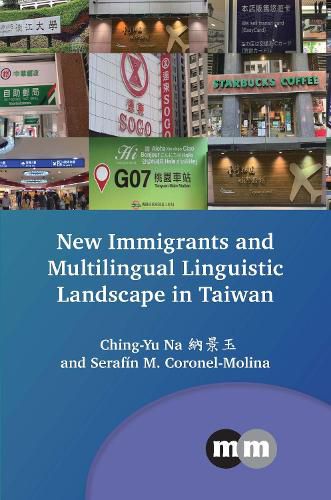Readings Newsletter
Become a Readings Member to make your shopping experience even easier.
Sign in or sign up for free!
You’re not far away from qualifying for FREE standard shipping within Australia
You’ve qualified for FREE standard shipping within Australia
The cart is loading…






This book offers a comprehensive exploration of the multilingual linguistic landscape in Taoyuan City, Taiwan, focusing on the impact of new immigrants and the diverse range of languages they speak, across urban and peripheral areas. It examines the city's transition from a predominantly monolingual or bilingual Chinese-English signage environment to a vibrant multilingual one shaped by Chinese, English, Japanese, Korean and Southeast Asian languages. Employing ethnographic methods and geosemiotic analysis, the study investigates code preferences and writing types on public and private signage. Additionally, it delves into community perceptions of the multilingual linguistic landscape and its implications for language policy and planning, providing valuable insights into evolving linguistic dynamics. The authors move beyond theoretical exploration to deliver practical insights with implications for institutions, policymakers, researchers, educators, students and practitioners alike. Ultimately, this work aspires to enrich understanding not only of Taiwan's linguistic landscape but also of broader global discussions on multilingualism, language policy and language planning.
$9.00 standard shipping within Australia
FREE standard shipping within Australia for orders over $100.00
Express & International shipping calculated at checkout
This book offers a comprehensive exploration of the multilingual linguistic landscape in Taoyuan City, Taiwan, focusing on the impact of new immigrants and the diverse range of languages they speak, across urban and peripheral areas. It examines the city's transition from a predominantly monolingual or bilingual Chinese-English signage environment to a vibrant multilingual one shaped by Chinese, English, Japanese, Korean and Southeast Asian languages. Employing ethnographic methods and geosemiotic analysis, the study investigates code preferences and writing types on public and private signage. Additionally, it delves into community perceptions of the multilingual linguistic landscape and its implications for language policy and planning, providing valuable insights into evolving linguistic dynamics. The authors move beyond theoretical exploration to deliver practical insights with implications for institutions, policymakers, researchers, educators, students and practitioners alike. Ultimately, this work aspires to enrich understanding not only of Taiwan's linguistic landscape but also of broader global discussions on multilingualism, language policy and language planning.